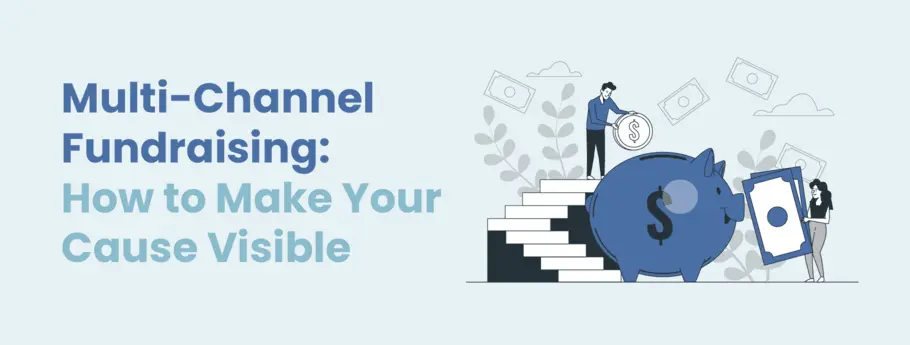Imaginative Nonprofit Fundraising Ideas: Boost Donations and Engagement
Imaginative Nonprofit Fundraising Ideas: Boost Donations and Engagement
Blog Article
The Role of Area Involvement in Nonprofit Fundraising: Structure Lasting Relationships for Sustainable Support
Area engagement is progressively identified as an essential component of effective not-for-profit fundraising. The techniques and approaches employed to engage communities differ commonly, increasing crucial inquiries about efficiency and impact.
Comprehending Area Involvement
Neighborhood involvement is an important part of effective not-for-profit fundraising initiatives. It describes the techniques and activities that companies use to connect with their local communities, cultivating relationships that are mutually beneficial. Understanding community interaction includes acknowledging its diverse nature, that includes cooperation, engagement, and outreach. Nonprofits should recognize crucial stakeholders-- such as neighborhood members, local companies, and other organizations-- to develop efficient interaction strategies.
Efficient area engagement is asserted on active listening and responsiveness to the needs and passions of the community. This procedure entails soliciting comments, understanding neighborhood dynamics, and guaranteeing that the organization's objective aligns with regional priorities. Involving the community can take different forms, consisting of public meetings, volunteer possibilities, and partnership efforts, each created to encourage participation and investment in the organization's objectives.
In addition, neighborhood involvement should be approached as a recurring dialogue as opposed to a single initiative. By cultivating an inclusive environment where neighborhood voices are listened to and valued, nonprofits can build a solid foundation for future fundraising ventures. Eventually, a deep understanding of neighborhood engagement equips companies to create genuine links that boost their overall effectiveness and sustainability.
Benefits of Strong Relationships
Solid connections created via neighborhood engagement return numerous benefits for not-for-profit fundraising efforts. First and leading, these relationships foster trust fund and trustworthiness, necessary elements in motivating benefactors to contribute. When potential supporters see a not-for-profit actively entailed in their neighborhood, they are more probable to believe in its objective and influence.

Furthermore, these relationships assist in efficient interaction. Nonprofits can take advantage of their connections to share tales of influence, updates, and requires, guaranteeing that supporters stay enlightened and engaged. This open line of interaction not only enhances bonds yet likewise encourages referral promo, expanding the not-for-profit's reach.
Lastly, solid community connections can bring in new partners and enrollers. Businesses and individuals are a lot more inclined to line up with companies that show purposeful area participation, offering extra sources and support that can substantially boost fundraising abilities. Therefore, cultivating durable relationships with area involvement is important to a nonprofit's long-lasting fundraising success.
Strategies for Efficient Interaction
How can nonprofits effectively involve their neighborhoods to improve fundraising efforts? Regular updates, involving material, and calls-to-action can galvanize area passion and involvement.
Second, hosting area occasions, such as workshops, volunteer possibilities, or fundraising drives, assists in face-to-face communication, enabling nonprofits to display their influence and initiatives. These events not just elevate funds yet likewise cultivate partnerships and enable area participants to engage straight with the cause.
Third, applying customized communication approaches can improve engagement. Customizing messages to certain contributor sectors based on passions and past payments fosters a feeling of belonging and investment in the company's objective.
Lastly, developing partnerships with neighborhood companies and area leaders can intensify outreach efforts. Joint initiatives can improve visibility and integrity, demonstrating a collective dedication to the community's health. By integrating these approaches, nonprofits can build enduring partnerships that boost fundraising efforts and drive sustainable assistance.
Measuring Interaction Success
While engaging the neighborhood is essential for effective not-for-profit fundraising, measuring the effectiveness of these interaction initiatives is equally vital. Developing clear metrics permits organizations to evaluate how well they are getting in touch with their audience and accomplishing their fundraising objectives. Trick efficiency indications (KPIs) such as contributor retention prices, volunteer participation levels, and engagement on social media platforms supply substantial data for analysis.

Frequently evaluating these metrics makes it possible for companies to pivot their techniques when essential, ensuring that neighborhood engagement continues to be lined up with their overall goal. In addition, sharing these results with stakeholders cultivates transparency and constructs trust fund, motivating more neighborhood participation. Ultimately, a durable dimension framework not just notifies future fundraising initiatives however also reinforces the visit relationship in between the nonprofit and its advocates, laying the foundation for sustainable success.
Situation Research Studies in Area Impact
Many study highlight the profound effect that area interaction can carry not-for-profit fundraising success. One notable example is the "Food for Thought" effort, where a neighborhood food bank partnered with organizations and browse around here institutions to host community dinners. These events not just elevated funds but likewise fostered a sense of belonging among participants, substantially enhancing donor retention rates.
One more compelling case is the "Green Spaces Task," which involved neighborhood homeowners in the revitalization of city parks. This initiative not only amassed financial backing from regional services yet additionally cultivated a volunteer base that added to recurring upkeep and shows. The feeling of possession and pride among community participants converted into sustained contributions.
In the realm of arts, the "Art for All" campaign successfully involved neighborhood artists and customers to produce collective art installments, bring about raised presence and contributions for a regional arts not-for-profit.
These examples highlight that when nonprofits focus on neighborhood involvement, they can create enduring partnerships that boost fundraising efforts, making sure sustainable support and cultivating a dynamic area society. Such situations demonstrate that neighborhood engagement is not merely a strategy yet an essential pillar of nonprofit success.
Final Thought
To conclude, community engagement is discover here essential to the success of nonprofit fundraising initiatives. By promoting strong partnerships with neighborhood stakeholders, companies enhance trust fund and reliability, bring about boosted benefactor retention and commitment. Executing reliable interaction approaches and determining their impact makes certain that nonprofits can flourish and adjust. Eventually, a durable foundation of area support not just enhances fundraising possible yet likewise grows a culture of cooperation, vital for achieving long-lasting business objectives and sustaining purposeful impact.
Nonprofits need to identify essential stakeholders-- such as neighborhood participants, neighborhood services, and various other companies-- to develop effective interaction approaches.

In conclusion, community involvement is essential to the success of nonprofit fundraising initiatives.
Report this page